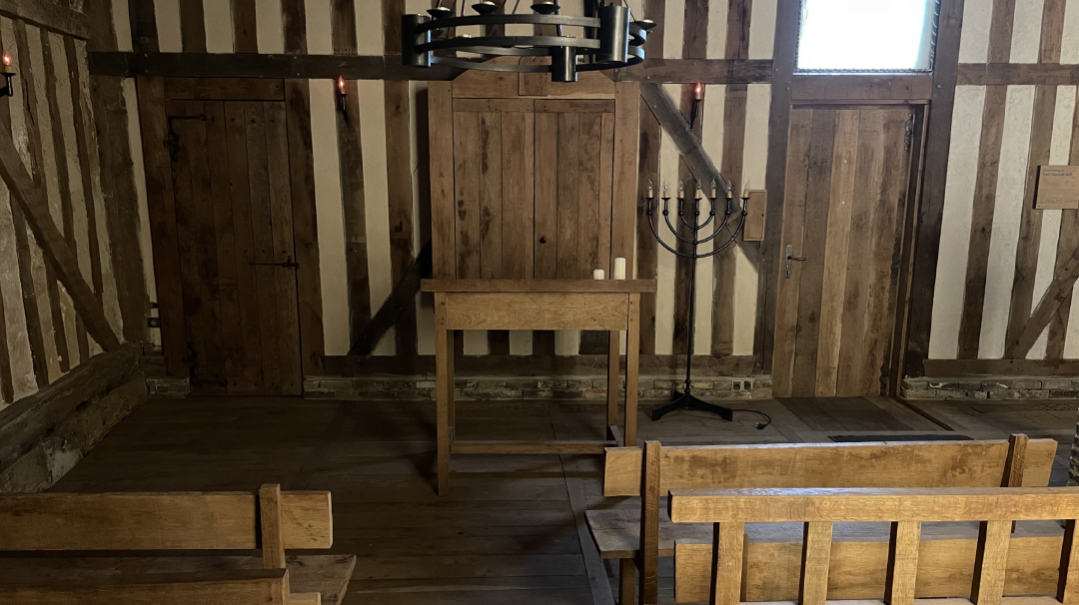In Rashi’s Chamber
| August 17, 2021To mark Rashi’s yahrtzeit, Yaakov Amsalem visited the ancient French city of Troyes, where the greatest Jewish commentator of all time lived

Photos: Yaakov Amsalem
Tangible Elements
A wooden chair with a tall back, a simple table for a shtender, and a lantern light fixture that has seen better days. These ancient items greet us upon our entering the restored study of the mefaresh hadas, the one whom Ibn Ezra calls Parshandasa, Rabbeinu Shlomo Yitzchaki zy”a.
Rashi. The name sends a tremor through the heart of everyone learning Chumash, Navi, Kesuvim, or Shas. It is virtually impossible to learn without Rashi’s help. His greatness in Torah, his refined middos, and his tremendous humility are plainly evident to anyone reading his holy words.
Rashi’s study, located in the heart of Troyes, France, a three-hour drive southeast from Paris, was restored by the local Jewish community, known as Kehillas Rashi. For most of his life, Rashi lived in Troyes, serving as the rav of its small Jewish community in addition to writing his Torah commentary and halachic teshuvos to questions sent to him from all over the world. The narrow lanes of this sleepy little town played host to Rashi’s daily walk from his home to this study room.
When I arrived in Troyes on a Friday a few weeks ago, Rashi’s room was still locked due to Covid restrictions, but it was opened in honor of my visit.
Rashi is so well known, yet so unknown; no image exists of the sage, and to this day, no one knows the precise location of his grave (although we visited the “Jewish field” in Troyes, where, according to tradition, Rashi is buried). Anyone who learns his commentary recognizes his style, which offers a simple explanation of the pasuk, yet somehow manages to smooth out every difficulty. In every generation, Jews touch Rashi through his commentary. But here, in this restored study room, one can perhaps imagine some of the tangible elements that were part of his daily routine.
Oops! We could not locate your form.







